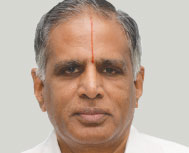Higher Education as “Soft Powerâ€
 Higher education has been receiving a lot of attention in the past three decades. Every government has been talking of increasing GER (Gross Enrolment Ratio); there is a constant mention about increasing investment to X percent of GDP by every government and dozens of new institutions (IIT’s, IIM’s, IIIT’s, NIT’s, Central Universities) have been created. Private institutions have grown to world-scale with VIT, Amity and SRM talking of 50,000+ students each in multiple campuses. There is talk of permitting foreign Universities to operate in India; however some concrete action is yet to be made.
Higher education has been receiving a lot of attention in the past three decades. Every government has been talking of increasing GER (Gross Enrolment Ratio); there is a constant mention about increasing investment to X percent of GDP by every government and dozens of new institutions (IIT’s, IIM’s, IIIT’s, NIT’s, Central Universities) have been created. Private institutions have grown to world-scale with VIT, Amity and SRM talking of 50,000+ students each in multiple campuses. There is talk of permitting foreign Universities to operate in India; however some concrete action is yet to be made.While India took nearly 50 years to establish half a dozen IIT’s and IIM’s, double that number were hurriedly created in just a couple of years. Many of the institutes are located in remote places due to which competent faculty members find it unattractive. With no industry and peer institution connect and lack of infrastructure; many of the new institutes suffer. Although the brand IIT /IIM is globally recognized, the new institutions are unable to attract the best students. Decision to open new institutes is not matched with concomitant fund release or land allotment, that even physical infrastructure is often not in place. Thus, the opportunities created still are far short of what is required.
The private institutions have managed to create large capacities, but have their own cup of woes; regulators tend to be ‘not-so-kind’ to private institutions that they too are forced to move in “fits and starts”; in fact, good private institutions struggle hard, while “unscrupulous” institutions thrive, often hoodwinking the regulators, faculty and students. The failure of government to create “higher quantity” of higher education opportunities and the private sector’s inability to create “higher quality” higher education opportunities forces many Indian students to seek opportunities outside India (such as USA, UK, Australia, Germany, Russia).
Amidst all this chaos, bright students continue to excel in spite of such vagaries. A huge part of the credit goes to the spectacular growth of IT industry from just 100,000 to 200,000 by the turn of the century, today there is direct employment of 44,00,000 and an equally large indirect employment opportunity - created in the past two decades in just one industry segment - namely, IT.The success is demonstrated by high-tech (IT, Biotech, Auto, Pharma, for example) industries, India operations of MNC’s and start-up companies.
Bollywood (Indian Cinema), Cricket, Yoga, Spirituality and to a certain extent Indian Classical music have been helping India for centuries to make a positive influence on the global citizens; tourism, particularly. Medical tourism has started to be viewed in a similar manner in the recent past. All of them represent India’s ‘soft power’. What is perhaps not realized is that higher education offers enormous opportunities of ‘positive influence’ and as such higher education indeed is a ‘soft power’, whose potential is yet to be realized.
Many influential Indians, former Prime Minister Dr. Manmohan Singh, for example, obtained their higher education in foreign countries (Cambridge University, in his case) several decades back; yet they continue to relish fond memories of their association in their formative years of professional career. Over the years such “connections” help, as associating such institutions and people opportunities can be created in the form of scholarships for students, chair professorships for faculty members and research centres that form platforms for student and faculty group to undertake high-quality research. All this leads to a cascading positive intellectual and scholarly influence that lead to sustainable thought leadership for the nation, a true measure of “soft power”. Such a development indirectly leads to lots of wealth creation opportunitiesas well.
India has created many “gurus” - Swami Vivekananda in the 19th century to Yoga exponent BKS Iyengar in the 20th Century; in the 21st Century let the “gurus” in higher education Institutes educate millions of “shishyas” from all over the planet, right in India. The scattered efforts by Culture Ministry (providing scholarships), UGC / MHRD, MEA even creating Institutes overseas must be synergised; regulators must look beyond “rules and regulations” and view this as “strategic opportunity”.
Let tens of thousands of Indian “gurus” in our Universities educate millions of “shishyas” from around the globe and realize the true potential of the soft power of higher education.

